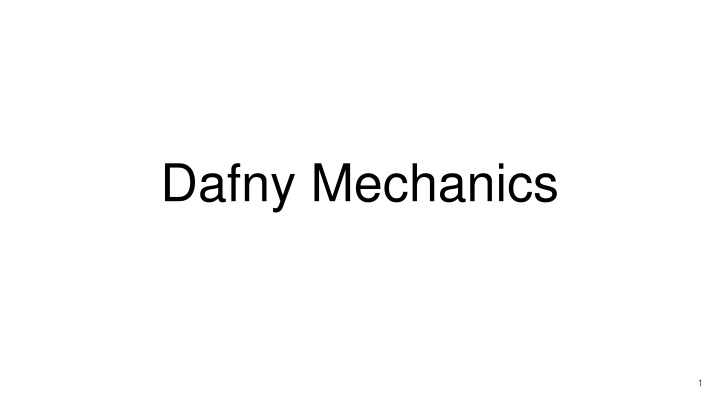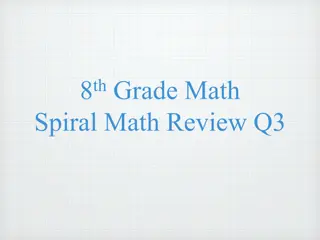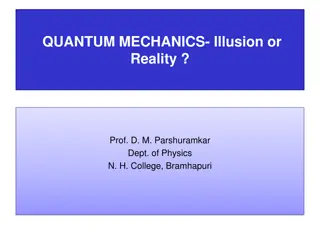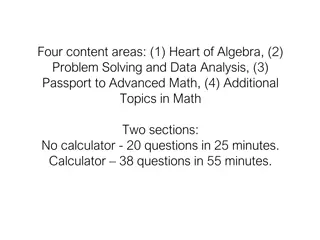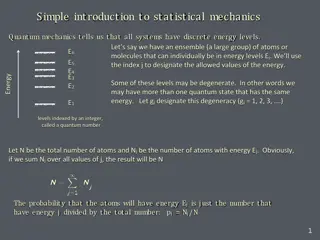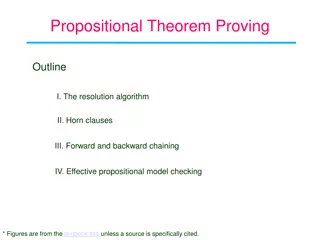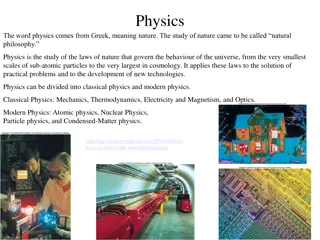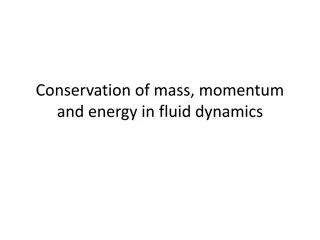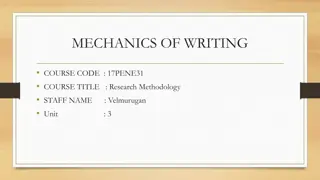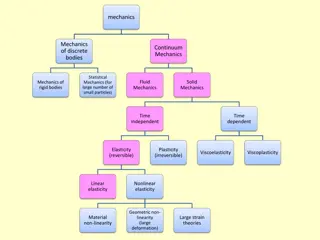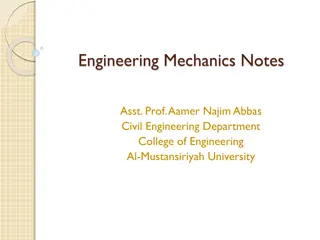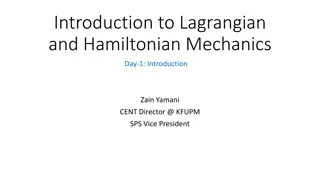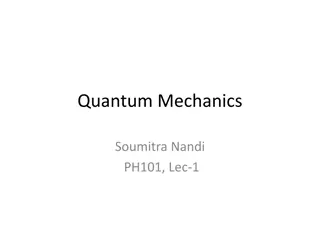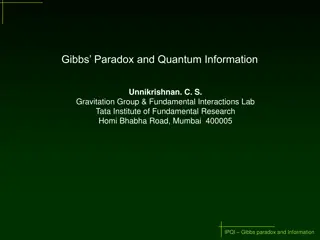Dafny Mechanics: Writing and Proving Math
Learn about Dafny, a Hoare-logic based verified programming language, and how to use it as a math engine. Install Dafny, work on exercises, and explore its features for writing and proving math statements effectively.
Download Presentation

Please find below an Image/Link to download the presentation.
The content on the website is provided AS IS for your information and personal use only. It may not be sold, licensed, or shared on other websites without obtaining consent from the author.If you encounter any issues during the download, it is possible that the publisher has removed the file from their server.
You are allowed to download the files provided on this website for personal or commercial use, subject to the condition that they are used lawfully. All files are the property of their respective owners.
The content on the website is provided AS IS for your information and personal use only. It may not be sold, licensed, or shared on other websites without obtaining consent from the author.
E N D
Presentation Transcript
Chapter Goal Get comfortable with writing and proving math in Dafny 2
What is Dafny? Dafny is: a Hoare-logic based verified programming language verification condition generation Z3 Dafny solver Dafny program type check code C# program generation Go program Java program C++ program 3
We will use Dafny as a math engine Ignore the imperative parts (Mostly) mutable objects heap framing : reads, modifies, fresh !new, == Use its mathematical subset 4
Install Dafny We have provided you with a docker container Start it Load it with the class exercises from github Edit the files from an editor in your native OS Run Dafny from a shell inside the container Feel free to install Dafny natively Real-time editor integration Editor syntax coloring 5
take a moment now and complete chapter01/exercises/exercise01.dfy. edit the file in your favorite OS editor in the docker shell: cd chapter01/exercises dafny exercise01.dfy 6
data-like stuff Math primitives int bool Immutable compounds set<T> seq<T> map<A, B> datatype Mutable objects class 7
procedure-like stuff as in math, not C: f(x, y) == f(x, y) defn substitution assert() is a static check! ensures is an exported assert. function returning bool expression context statement context ghost (math only) function predicate lemma executable function method method 8
What does it mean to verify or prove something? datatype Graph = Graph(nodes:set<Node>, edges:set<Edge>) type Path = seq<Node> function NodesWithOddDegree(g: Graph) : set<Node> { } predicate EulerWalk(g: Graph, p: Path) { } lemma EulersGraph(g:Graph) requires |NodesWithOddDegree(g)| > 2 ensures !exists p :: EulerWalk(g, p) { // proof goes here } precondition |NodesWithOddDegree(g)| > 2 ==> !exists p :: EulerWalk(g, p) postcondition 9
lemma IntegerOrdering(a: int, b: int) requires b == a + 3 ensures a < b { assert a < b; } ensures is an exported assert. assert() is a static check! 10
predicate Human(a: Thing) // Empty body ==> axiom predicate Mortal(a: Thing) lemma HumansAreMortal() ensures forall a :: Human(a) ==> Mortal(a) // axiom lemma MortalPhilosopher(socrates: Thing) requires Human(socrates) ensures Mortal(socrates) { assert Human(socrates); HumansAreMortal(); assert Mortal(socrates); } After complaining about an assert, dafny assumes the predicate. 11
Boolean operators Shorter operators have higher precedence P(x) && Q(x) ==> R(S) Bulleted conjunctions / disjunctions ! && || == ==> <==> forall exists && && Q(y) && R(x) ==> S(y) && T(x, y) P(x) ( ) Parentheses are a good idea around forall, exists, ==> 12
if-then-else expressions if a < b then P(a) else P(b) <==> ( a < b && P(a) ) || ( !(a < b) && P(b) ) If-then-else expressions work with other types: if a < b then a + 1 else b - 3 13
Quantifier syntax forall a :: P(a) expression forms forall a :: Q(a) ==> R(a) forall a | Q(a) :: R(a) forall a | Q(a) ensures R(a) { } statement form 14
Function syntax function result type explicitly typed parameters function eval_linear(m: int, b: int, x: int) : int { m * x + b } definition body is an expression whose type matches result declaration predicate means function returning bool . 15
This lemma verifies because it can see inside the definition of function eval_linear... lemma syntax lemma zero_slope(m: int, b: int, x1: int, x2:int) { if (m == 0) { assert eval_linear(m, b, x1) == eval_linear(m, b, x2); } } definition body is an imperative-style statement context ...but lemma bodies are opaque! The result of this verification can t be used anywhere else. 16
lemma syntax lemma zero_slope(m: int, b: int, x1: int, x2:int) ensures m == 0 ==> eval_linear(m, b, x1) == eval_linear(m, b, x2) { } lemma zero_slope(m: int, b: int, x1: int, x2:int) requires m == 0 ensures eval_linear(m, b, x1) == eval_linear(m, b, x2) { } 17
Sets set is a templated type set literals element membership subset union difference intersection equality (works with all mathematical objects) set cardinality set comprehension a: set<int>, b: set<int> {1, 3, 5} {} 7 in a a <= b a + b a - b a * b a == b |a| set x: nat | x < 100 && x % 2 == 0 18
take a moment now and complete chapter01/exercises/exercise05.dfy. edit the file in your favorite OS editor in the docker shell: cd chapter01/exercises dafny exercise05.dfy 19
Sequences seq is a templated type sequence literal element membership concatenation equality (works with all mathematical objects) sequence length sequence slice sequence comprehension a: seq<int>, b: seq<int> [1, 3, 5] [] 7 in a a + b a == b |a| a[2..5] a[3..] seq(5, i => i * 2) seq(5, i requires 0<=i => sqrt(i)) 20
Maps map is a templated type map literal key membership equality (works with all mathematical objects) map update (not a mutation) map comprehension a: map<int, set<int>> map[2:={2}, 6:={2,3}] 7 in a 7 in a.Keys a == b a[5 := {5}] map k | k in Evens() :: k/2 21
var is mathematical let. It introduces an equivalent shorthand for another expression. lemma foo() { var set1 := { 1, 3, 5, 3 }; var seq1 := [ 1, 3, 5, 3 ]; assert forall i | i in set1 :: i in seq1; assert forall i | i in seq1 :: i in set1; assert |set1| < |seq1|; } 22
Algebraic datatypes (struct and union) datatype HAlign = Left | Center | Right new name we re defining disjoint constructors datatype VAlign = Top | Middle | Bottom datatype TextAlign = TextAlign(hAlign:HAlign, vAlign:VAlign) multiplicative constructor datatype Order = Pizza(toppings:set<Topping>) | Shake(flavor:Fruit, whip: bool) 23
Working with unions (sum types) predicate IsCentered(va: VAlign) { !va.Top? && !va.Bottom? } constructor test function DistanceFromTop(va: VAlign) : int { match va case Top => 0 case Middle => 1 case Bottom => 2 } if-then-else for datatype enums 24
Hoare logic composition lemma DoggiesAreQuadrupeds(pet: Pet) requires IsDog(pet) ensures |Legs(pet)| == 4 { } lemma StaticStability(pet: Pet) requires |Legs(pet)| >= 3 ensures IsStaticallyStable(pet) { } lemma DoggiesAreStaticallyStable(pet: Pet) requires IsDog(pet) ensures IsStaticallyStable(pet) { DoggiesAreQuadrupeds(pet); StaticStability(pet); } 25
Lemmas can return results lemma EulerianWalk(g: Graph) returns (p: Path) requires |NodesWithOddDegree(g)| <= 2 ensures EulerWalk(g, p) 26
Detour to Imperativeland predicate IsMaxIndex(a:seq<int>, x:int) { && 0 <= x < |a| && (forall i :: 0 <= i < |a| ==> a[i] <= a[x]) } 27
Imperativeland method findMaxIndex(a:seq<int>) returns (x:int) requires |a| > 0 ensures IsMaxIndex(a, x) { var i := 1; var ret := 0; while(i < |a|) invariant 0 <= i <= |a| invariant IsMaxIndex(a[..i], ret) { if(a[i] > a[ret]) { ret := i; } i := i + 1; } return ret; } predicate IsMaxIndex(a:seq<int>, x:int) { && 0 <= x < |a| && (forall i :: 0 <= i < |a| ==> a[i] <= a[x]) } 28
